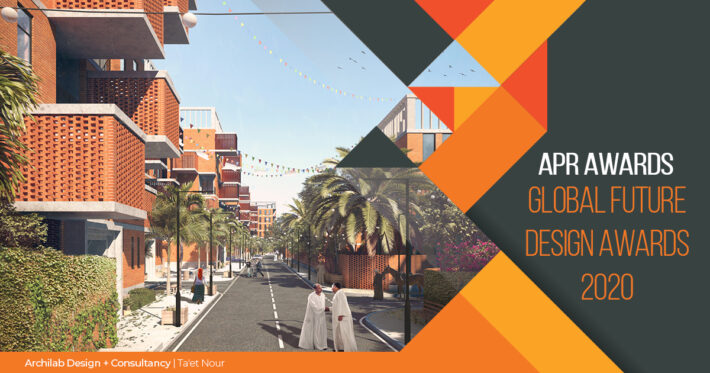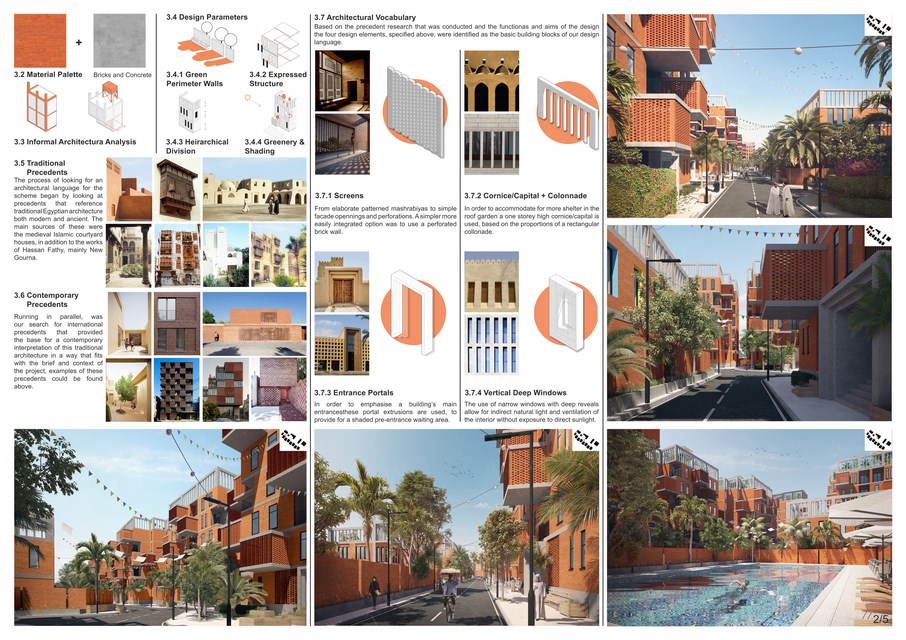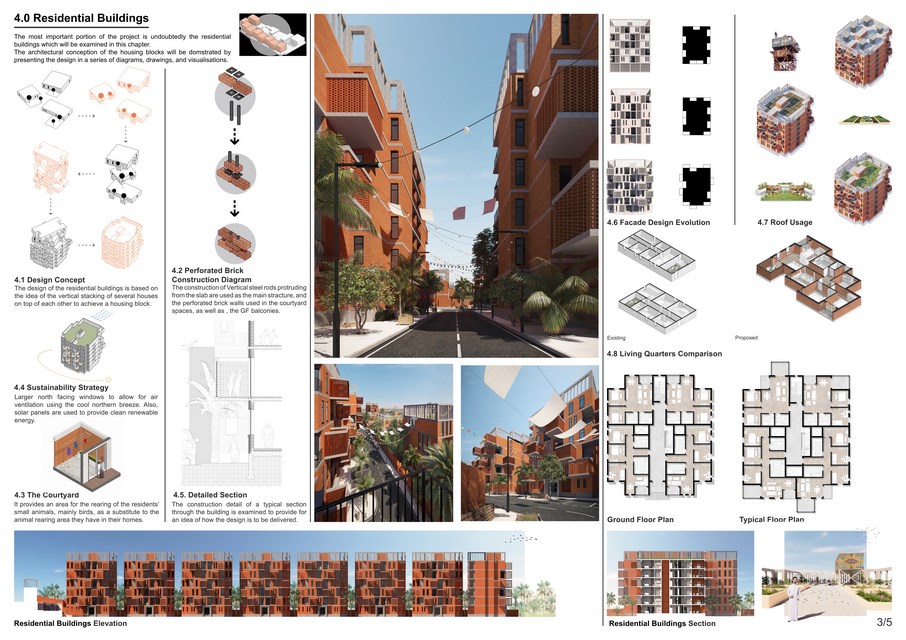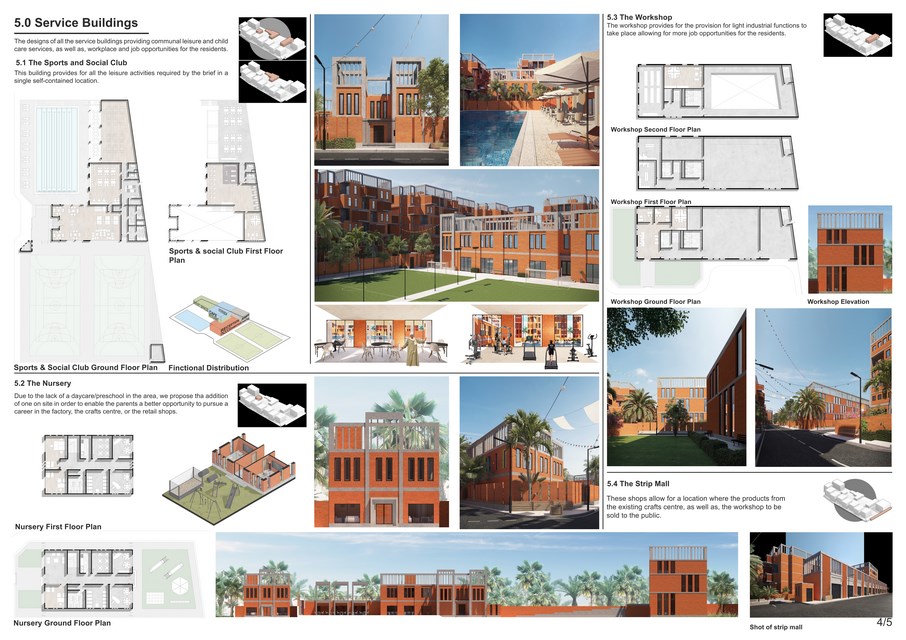Taket Nour is a mixed use urban project on the outskirts of the Assiut governorate in Egypt. The project is designed as a humanitarian response to the needs of the residents of an informal settlement near the village of Al Izziya, where the recently built high voltage power lines are causing the residents serious health hazards. As a result this proposal was presented in order to move the residents to a nearby plot of land far away from the power lines.
Special Mention- Global Future Design Awards 2020
Firm | Archilab Design + Consultancy
Architect/Designer | Hany Maher Ibrahim
Category | Residential Concept
Team | Hany Ibrahim, Ramez Khalil, Simona Kuneva, Bram Winterford, Rana Khalil, Mohamed Salah, Sherine Gabr, Mohamed Hassan, Enas Mahmoud, Sherry Badea
Country | Egypt
Photographer/Copyright | ©Bram Winterford
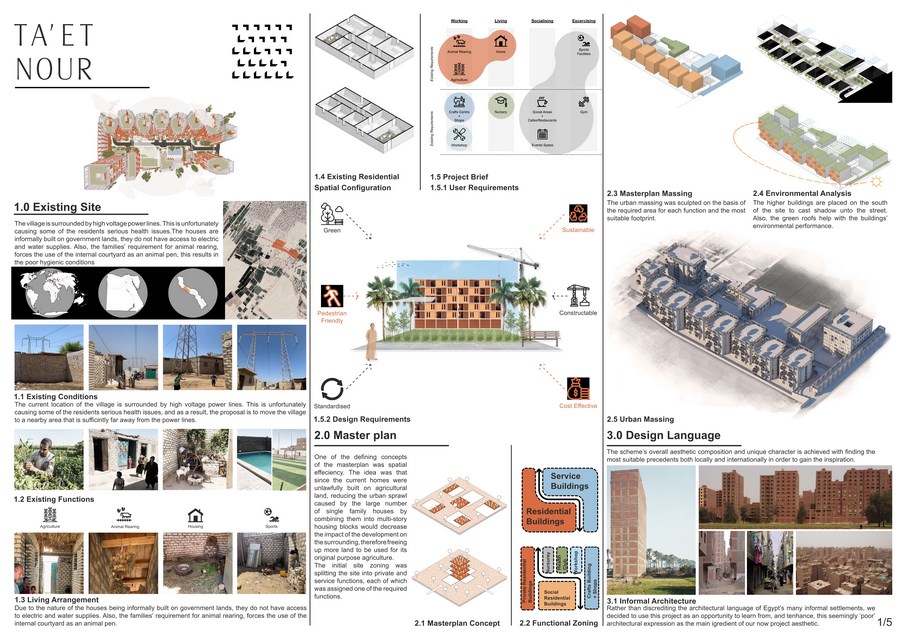
The scheme begins by identifying the residents’ requirements in a series of site visits, and using this brief to create a simple division on the new site between the public and private uses using a new green pedestrian friendly main road. From this simple starting point began the process of design that was built on studying the vernacular in its traditional form and in its informal form. Thus, by not discrediting the value of the architecture found in informal settlements and trying to marry this ‘style’, its construction techniques, and materials to the Egyptian vernacular architecture we were able to create a new design language that provides for sustainability, ease of construction, and aesthetic fulfillment for residents and patisseries alike.
On the macro scale the design tries to maximize the functionality of the design through the use of the roofs, street corners and other ‘wasted space’ to create opportunities for both private and public gathering in a ‘garden’ setting. on the micro scale the design of the main aspect of the project, the residential units, treats the blocks as stacked ‘houses’ complete with their own outdoor courtyard, as opposed to simple blocks of flats. This is done to fulfill the intricate needs and requirements of the residents both cultural and functional.


